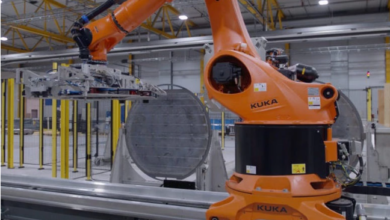Salzgitter receives €1 billion to use hydrogen in steel production
The grant will also support the construction and installation of a large-scale electrolyser.

The European Commission has approved a €1 billion German measure to help Salzgitter Flachstahl GmbH decarbonise its steel production processes by using hydrogen, including renewable hydrogen produced on-site.
The measure contributes to the achievement of the EU Hydrogen Strategy and the European Green Deal targets while helping reduce dependence on imported Russian fossil fuels and fast forward the green transition, in line with the REPowerEU Plan.
Germany notified to the Commission a €1 billion measure to support investments in the greening of Salzgitter’s steel manufacturing processes thanks to increased production and use of renewable hydrogen.
The aid, which will take the form of a direct grant, will support the construction and installation at the company’s site in the city of Salzgitter (Lower Saxony) of a direct reduction plant and electric arc furnace which will replace one of the blast furnaces currently operated by Salzgitter.
This will allow substituting the use of fossil sources (i.e. carbon in iron ore) with hydrogen in steel production, thereby avoiding almost all direct CO2 emissions in steel production. The new installation will produce in a greener manner approximately 1.9 million tonnes per year of crude steel – the same volume of crude steel currently produced via a more polluting process.
The measure will also support the construction and installation of a large-scale (100 MW) electrolyser, producing approximately 9,000 tonnes of renewable hydrogen per year. The hydrogen produced by the electrolyser will be used as feedstock in the direct reduction plant. The electrolyser, the direct reduction plant and the electric arc furnace are envisaged to start operating in 2026.
Once completed, the project is expected to avoid the release of 3.6 million tonnes of carbon dioxide annually. In addition, to maximise the reduction of greenhouse gas emissions, the generated hydrogen will be produced solely with the electricity from renewable sources.
Margrethe Vestager, EVP, in charge of competition policy, said, “This €1 billion measure enables Germany to support Salzgitter’s plans to decarbonise its steel production processes by using and producing renewable hydrogen.”
